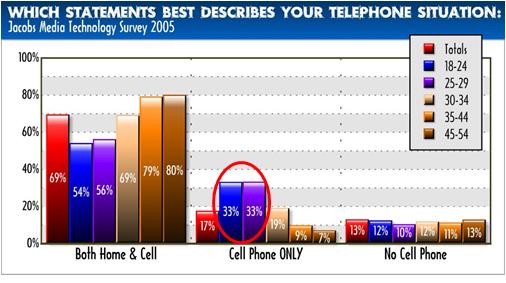At the risk of offending some of my brothers in media research, today’s blog focuses on how all the many tech changes in our world are impacting the ability to accurately survey a population. The fact is that while web-based research was once a very non-conventional form of research – especially among purists – it has now entered the mainstream.
When Jacobs Media started to seriously move into the Wild West of web research back in the ‘90s, it started with Buzz Knight at WZLX. I had long wondered whether these email databases that radio was amassing might have uses other than newsletter “eblasts.” The concept was focused on how they might serve two important purposes for radio:
- Provide an inexpensive, reliable way of taking the pulse of the audience at any given moment in time
- Reinforce the notion that the station cared enough about listeners to ask their opinions
We gave it a beta test when ZLX hired a new morning show. In those Arbitron diary days, you literally had to wait months in order to even get an initial read as to whether your new talent was impacting the audience.
So we launched a simple web survey to get a sense for how the show was being welcomed by the active audience. And in 24 hours, hundreds and hundreds of completed surveys came back. They told us how they felt about our new talent, as well as feedback about the bit and benchmarks that were working… and those that weren’t. Many also took the opportunity to provide feedback about other aspects of the station – our music, promotions, and other programming. Most were simply thrilled that we bothered to ask.
Fast-forward a couple years to 9/11. That tragic event turned out to be a game-changer for our company. Most of our clients were perplexed about how to proceed in the days that followed the tragic events of 9/11. In October, we built and executed our first nationwide web poll. Our “coalition of the willing” was 59 rock stations of different pedigrees. Over a one-week period, more than 26,000 respondents filled out our survey, helped stations better understand the mood of the audience, and reinforced to me and my company the value of web research.
In subsequent years, we designed and launched web surveys about “shock jocks” and indecency, format-specific deep dives for Classic, Active, and Alternative Rock, and other studies where radio needed answers but did not have the resources to obtain them.
Of course, all of this culminated in our Techsurveys that started in 2005. Last year, for Techsurvey8, we were able to include 170 stations across North America. In just a couple weeks, Techsurvey9 launches and we’re well over the 225 milestone. (There is still time to sign-up your station.)
In that first Techsurvey, we happened across an interesting finding – and one that we’ll talk about more in tomorrow’s post – the rise of “cell phone only” households.
The big finding was that while 17% of all respondents had dumped their landlines, one-third of 18-29 year-olds fell into this cell phone-centric group:
 At the time, this was an eye-opener because “cell phone only” homes were not part of Arbitron’s diary sample frame. For brands targeting young listeners – like Alternative – it became a big topic of conversation that year among the Advisory Council and at stations around the country.
At the time, this was an eye-opener because “cell phone only” homes were not part of Arbitron’s diary sample frame. For brands targeting young listeners – like Alternative – it became a big topic of conversation that year among the Advisory Council and at stations around the country.
And what we’ve subsequently learned is that as the incidence of households that have dropped their landlines rises every year, survey researchers all over the U.S. have been challenged to provide accurate measurement of the overall population.
This came to a head last fall during the Presidential election. There was no shortage of polls, but there was considerable debate in the political research community about how to address this issue of being able to reach likely voters.
That’s our topic for tomorrow.
- Media And Technology In 2025: Believe It Or Not! - April 18, 2025
- In Radio, You Just Never Know - April 17, 2025
- The Secret To Making A Great Podcast (And Great Radio) - April 16, 2025





Leave a Reply